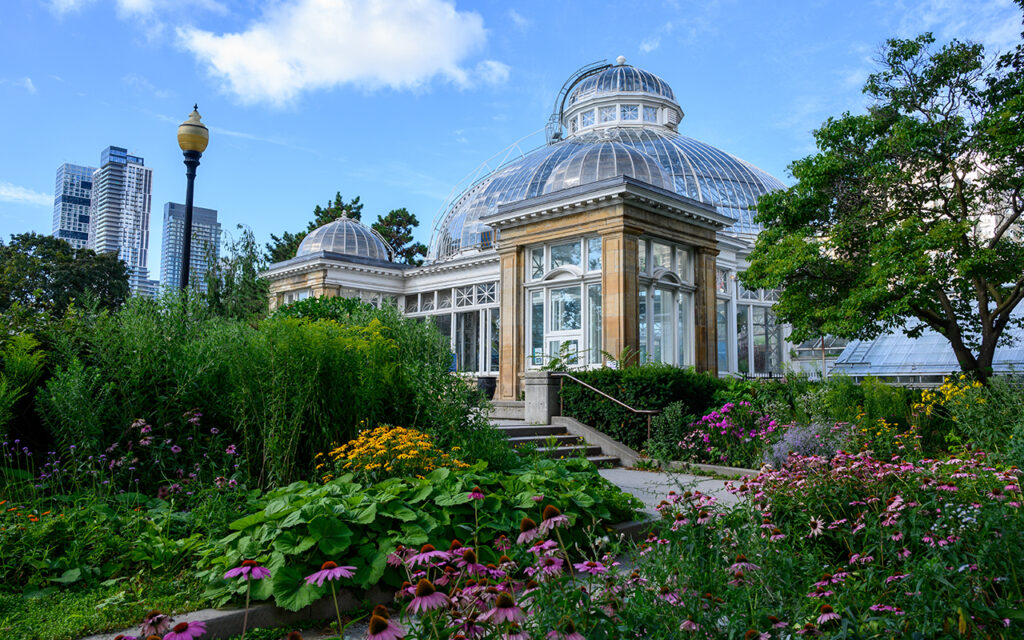The land on which Allan Gardens conservatory and park sits was donated to the Horticultural Society of Toronto to be used as free, publicly accessible space donated to plant display in 1958 by George Allan a local politician and landowner. In 1879, the horticultural society opened the horticultural pavilion and conservatory on the site which was used to host events and flower shows. The building was destroyed by fire in 1902.
In 1910, a new classically proportioned palm house conservatory building, designed by Robert McCallum, opened and is the central heritage feature on the site today. The conservatory has been expanded – once in 1920 and once in 1957 with the four show house wings.
In 2004 the University of Toronto donated the final Conservatory building, originally built in 1932. This building is used for teaching and programming by the Friends of Allan Gardens.
This listing was uploaded by Katie Miller, Heritage Analyst at the National Trust for Canada, on Wednesday July 2, 2025.
Please confirm details at the site’s own website before planning your visit. Are you the owner/operator of this historic place? Would you like to make changes to this listing? Please contact us at historicplacesday@nationaltrustcanada.ca

By Katelyn Law (Toronto)
Allan Gardens is a unique spot in Toronto to enjoy lush greenery and plants such as orchids, cacti, olive trees, palms, and many other plants from around the world. Throughout the year, the conservatory and its six greenhouses offer warmth and a connection to nature for the public, even on a cold winter day.
George Allan donated the land where Allan Gardens sits to the Toronto Horticultural Society in 1858, where they first opened an open-air pavilion for concerts and horticultural displays. It was replaced by a closed pavilion in 1879, which burnt to the ground in 1902. At this point, the city of Toronto managed the park and pavilion, and they designed and built the current Palm House. The main growth of the conservatory and the development of the greenhouse wings occurred after World War II, and the plant collections have grown ever since.
I quite enjoy this site for its plants and the opportunity to see extraordinary ones, especially in winter.
